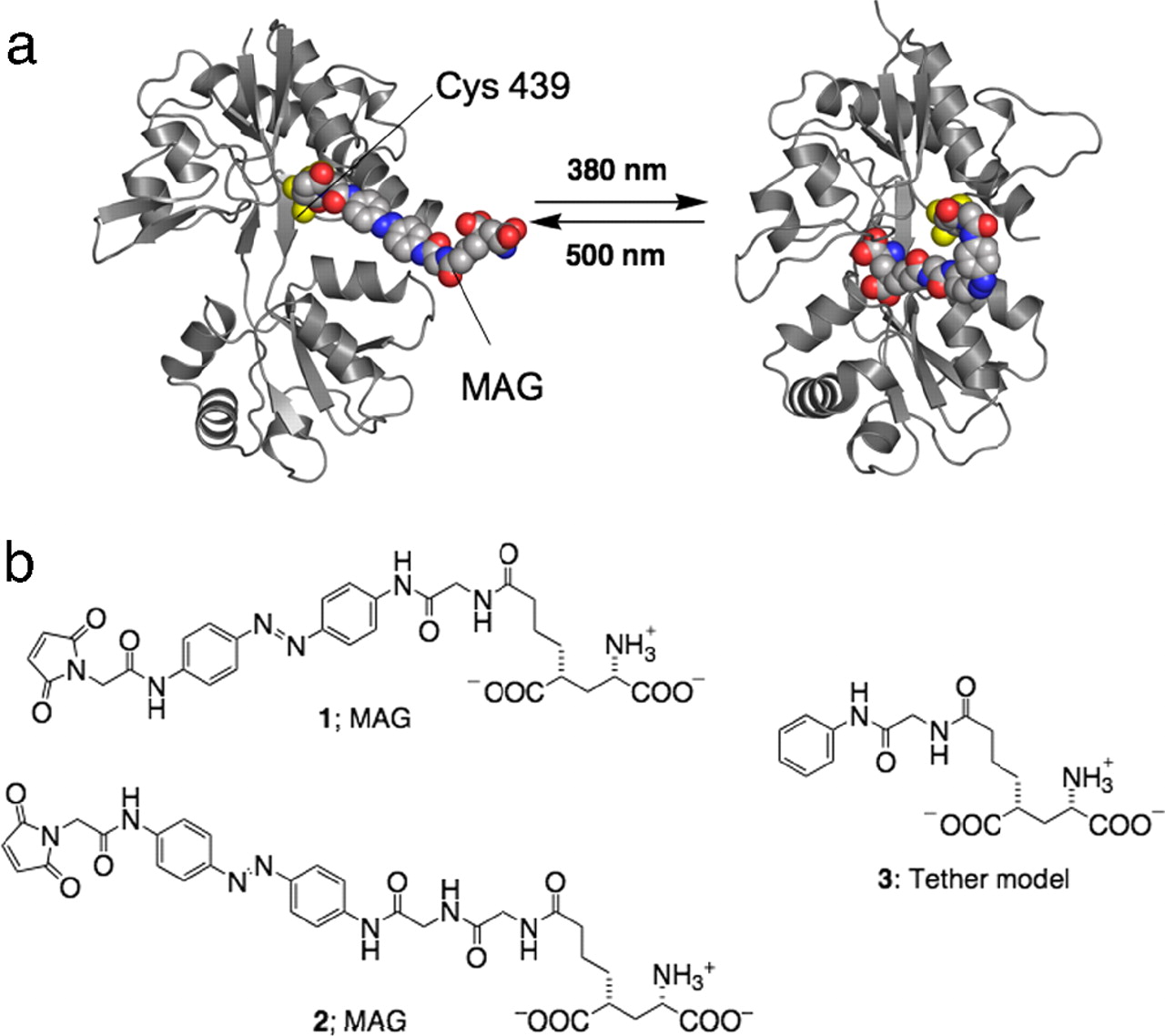
Mechanisms of photoswitch conjugation and light activation of an ionotropic glutamate receptor
Abstract
The analysis of cell signaling requires the rapid and selective manipulation of protein function. We have synthesized photoswitches that covalently modify target proteins and reversibly present and withdraw a ligand from its binding site due to photoisomerization of an azobenzene linker. We describe here the properties of a glutamate photoswitch that controls an ion channel in cells. Affinity labeling and geometric constraints ensure that the photoswitch controls only the targeted channel, and enables spatial patterns of light to favor labeling in one location over another. Photoswitching to the activating state places a tethered glutamate at a high (millimolar) effective local concentration near the binding site. The fraction of active channels can be set in an analog manner by altering the photostationary state with different wavelengths. The bistable photoswitch can be turned on with millisecond-long pulses at one wavelength, remain on in the dark for minutes, and turned off with millisecond long pulses at the other wavelength, yielding sustained activation with minimal irradiation. The system provides rapid, reversible remote control of protein function that is selective without orthogonal chemistry.